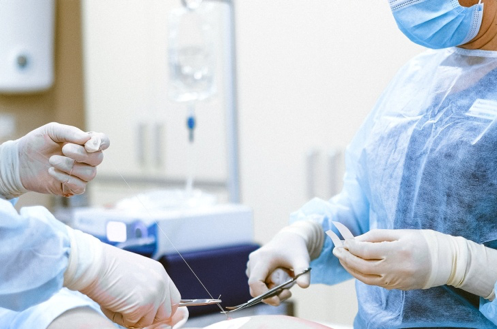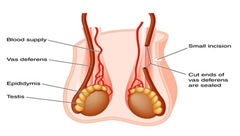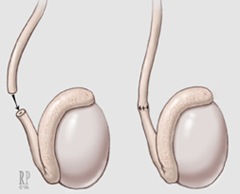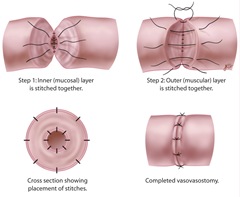What is the recovery time for a vasectomy reversal procedure? A vasectomy is an effective contraceptive method that is highly common in the US today. However, many people choose to reverse this procedure because they want to begin a family and enjoy parenthood.
While the primary reasons for a vasectomy reversal are heart-warming, there are certain complications involved. What are they? Firstly, some men cannot tolerate the pain that may sometimes arise after the procedure.

(Source)
Moreover, scrotum and reproductive glands-related medical conditions can compel a person to get a vasectomy reversal. Here, we will begin by looking at how a vasectomy reversal takes place, risk factors, recovery time, and some tips for caution.
Vasectomy Reversal in Simple Words
At the beginning of the procedure, the surgeon will ensure that your scrotum is numb through a numbing anesthetic agent. Moreover, they will sedate you to prevent any sudden unintentional complications during a procedure. Following that, the normal process would involve an incision on the scrotum through which the surgeon will separate the vas deferens from the nearby tissues.
After that, the surgeon will open and check inside the tubes to ensure the presence of fluid (sperm). In case the tube appears dry, meaning that there isn’t any sperm in the tube, your surgeon may find another end of it to attach with the epididymis (male reproductive tissues and organs that produce sperm).
This might be because the scar tissue from previous incisions and surgery might be blocking the sperm. However, if there is healthy sperm in it, then your surgeon will choose to attach the ends of the disconnected vas.
Bear in mind that you may be in the operating theater/surgical room for 3-4 hours because the process involves using highly surgical instruments and a microscope.
What is the Recovery Time for a Vasectomy Reversal?
The procedure usually takes place on an outpatient basis, which means that there generally isn’t the need for a night stay at the hospital or the surgeon’s clinic. However, in case of complications, the surgeon/caretaker may suggest that you stay at the hospital or clinic for extended hours to receive medical care.
The bandages will cover the incision for nearly six weeks after the procedure is complete. It is advisable to protect the surgical area from getting wet during urination, bathing, showering, etc. Stitches generally dissolve within two weeks of the surgery. Importantly, it is advisable to rest during the first two days or 48 hours of the surgery and move as little as possible.

(Source)
Further, you should also avoid sexual intercourse, heavy lifting, and any aerobic exercises for nearly four weeks. This is because the veins and scrotum (vas deferens) will be healing. Normally, your surgeon/doctor may ask for semen samples after a few months of the surgery to ensure the presence of healthy sperm. In case there is no presence of sperm in the vas, they may recommend additional surgeries.
Risk Factors of a Vasectomy Reversal
Multiple risk factors can cause a vasectomy reversal to go wrong. It all comes down to adequate care and consideration, which prevents the rise of sudden and severe complications. Despite that, here are some of the most common risks factors/side effects that may affect your body after the vasectomy reversal procedure:
- Inability to maintain maximum fertility (problems with the male reproductive glands)
- Swelling on the scrotum
- Pain in the scrotum or nearby pelvis area
- Degeneration of testicular tissues/cells (atrophy)
- Low sperm count
- Bleeding
- Blood collection (hematoma)
While many of the side effects such as bleeding over stitches, swelling, bruising, pain in the scrotum, and hematoma do not pose a serious threat, leaving them as it is can cause severe effects. Therefore, seek medical care if you experience any side effects.
Caution to take Post-Procedure
- Wear jockstraps
- Avoid loose underwear
- Use ice packs on the area of surgery
- Avoid sexual intercourse
- Avoid aerobic exercises
- Use painkillers and antibiotics in case of swelling, pain, and bleeding under the doctor’s discretion.
Recovery Time for a Vasectomy Reversal: Conclusion
Dr. Yaniv Larish is an experienced urologist in NYC and is highly skilled in the use of micro-surgical equipment and instruments. Along with years of experience in performing vasectomy reversals and urological surgeries, Dr. Larish has an excellent reputation among all of his patients.
Schedule a private consultation with us today. Give us a call at (646) 862-5500 or visit us in person to learn more about our services from our expert urologists. All of our patients receive world class medical care and service.
Yaniv Larish, MD
4 East 76th Street
New York, NY 10021
(646) 862-5500
Reference Links
https://www.medicalnewstoday.com/articles/318900
https://myhealth.alberta.ca/Health/aftercareinformation/pages/conditions.aspx?hwid=zc2381
https://my.clevelandclinic.org/health/treatments/15459-vasectomy-reversal
https://www.wikihow.com/Recover-from-a-Vasectomy-Reversal



